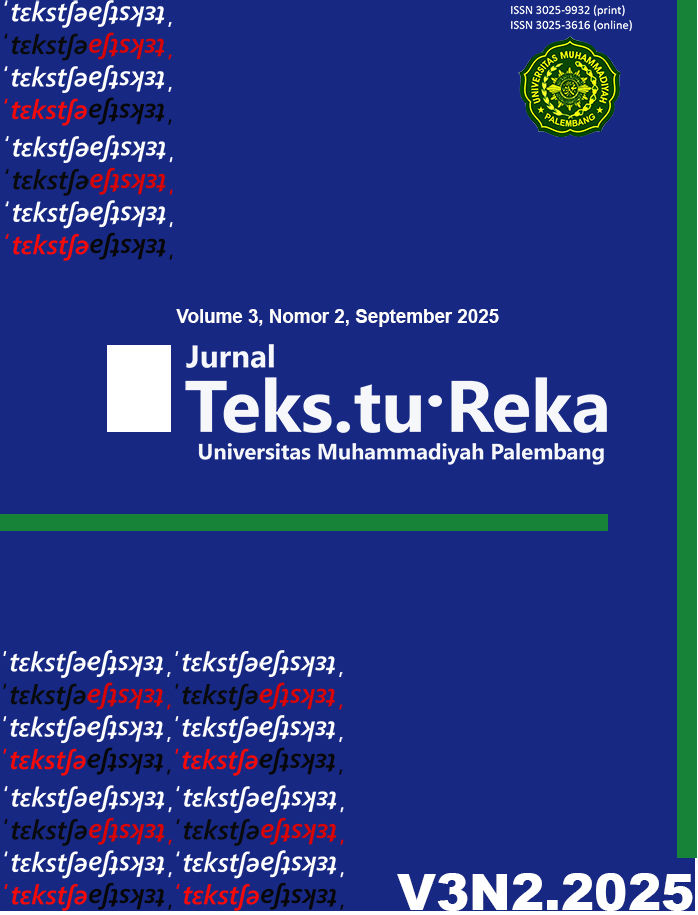The Influence of Circulation and Spatial Planning in Forming Visitor Experience
Case Study: Lampung Museum
DOI:
https://doi.org/10.32502/tekstureka.v3i2.587Keywords:
visitor experience, spatial planning, Lampung Museum, circulationAbstract
Lampung Museum, a cultural and scientific center has developed into more than just a place to store artifacts but also a dynamic place for social and educational interaction. Therefore, it is important to understand how museum layout and circulation can affect the visitor experience when interacting with the museum environment. The research method uses a descriptive qualitative approach through direct observation, semi-structured interviews and literature studies. The results of the study indicate that good circulation and layout play a significant role in shaping a meaningful visitor experience, especially in the context of a museum. There are several elements that affect the quality of the visitor experience in terms of circulation and layout, such as: Navigation, Flow, Accessibility, Zoning, Connectivity, Capacity, Lighting, Ventilation, Visual Experience, and Supporting Facilities. Recommendations for improvement include the addition of signage, integration between building functions, improved lighting and ventilation, the addition of interactive technology, and the addition of supporting facilities such as seating, tour guides, cafes and souvenir shops.
Downloads
Published
Issue
Section
License
Copyright (c) 2025 Audy Nadhifa Salsabilla Suryhana, Diana Lisa

This work is licensed under a Creative Commons Attribution-ShareAlike 4.0 International License.
Jurnal Arsitektur TekstuReka (JAT) have CC-BY-SA or an equivalent license as the optimal license for the publication, distribution, use, and reuse of scholarly work.
Authors who publish Jurnal Arsitektur TekstuReka (JAT) agree to the following terms: Authors retain copyright and grant the Jurnal Arsitektur TekstuReka (JAT) right of first publication with the work simultaneously licensed under a Creative Commons Attribution License (CC BY-SA 4.0) that allows others to share (copy and redistribute the material in any medium or format) and adapt (remix, transform, and build upon the material) the work for any purpose, even commercially, with an acknowledgement of the work's authorship and initial publication in Jurnal Arsitektur TekstuReka (JAT). Authors are able to enter into separate, additional contractual arrangements for the non-exclusive distribution of the journal's published version of the work (e.g., post it to an institutional repository or publish it in a book), with an acknowledgement of its initial publication in Jurnal Arsitektur TekstuReka (JAT). Authors are permitted and encouraged to post their work online (e.g., in institutional repositories or on their website) prior to and during the submission process, as it can lead to productive exchanges as well as earlier and greater citation of published work (see The Effect of Open Access).
![]()
Work is distributed below This work is licensed under a Creative Commons Attribution-ShareAlike 4.0 International License.













